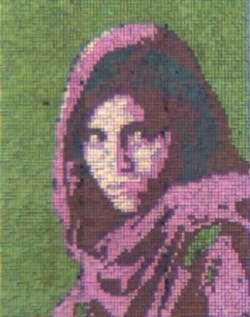Nanostructured, reflective, and flexible skin-like display boasts full color
Structural color arising from nanostructured metallic surfaces offers many benefits compared to conventional pigmentation based display technologies, such as increased resolution and scalability of their optical response with structure dimensions. However, once these structures are fabricated their optical characteristics remain static, limiting their potential application. But researchers from the University of Central Florida (UCF; Orlando, FL), by using a specially designed nanostructured plasmonic surface in conjunction with high-birefringence liquid crystals (LCs), demonstrated a tunable polarization-independent reflective display surface where the color of the surface is changed as a function of applied voltage.
RELATED ARTICLE: Ultrathin nanostructured metals double plasmonic color filter transmission
The researchers say that a large range of color tunability is achieved over previous reports by using an engineered surface that allows full LC reorientation while maximizing the overlap between plasmonic fields and LCs. In combination with imprinted structures of varying periods, a full range of colors spanning the entire visible spectrum is achieved, paving the way towards dynamic pixels for reflective displays.
This paper appeared in the June issue of Nature Communications.
SOURCE: UCF; http://www.creol.ucf.edu/NewsEvents/NewsDetail.aspx?NewsID=598

Gail Overton | Senior Editor (2004-2020)
Gail has more than 30 years of engineering, marketing, product management, and editorial experience in the photonics and optical communications industry. Before joining the staff at Laser Focus World in 2004, she held many product management and product marketing roles in the fiber-optics industry, most notably at Hughes (El Segundo, CA), GTE Labs (Waltham, MA), Corning (Corning, NY), Photon Kinetics (Beaverton, OR), and Newport Corporation (Irvine, CA). During her marketing career, Gail published articles in WDM Solutions and Sensors magazine and traveled internationally to conduct product and sales training. Gail received her BS degree in physics, with an emphasis in optics, from San Diego State University in San Diego, CA in May 1986.
